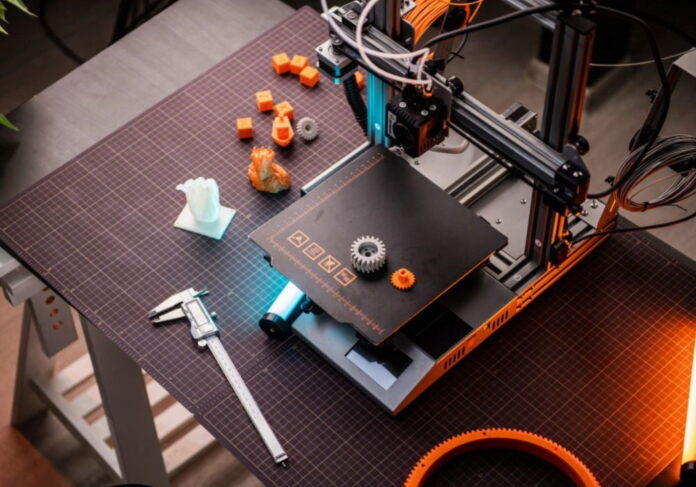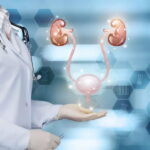3D printing technology has advanced in recent years and found applications in multiple markets. However, some caregivers might think the medical world would not find a use for it. That is not true, and at least five healthcare products can be made with 3D printers.
Reinforced Tubing
One medical product manufacturers can produce using nylon Kevlar 3D filaments is reinforced tubing. Cleaning rooms and veterinary rooms use the tubing to separate fluids. Kevlar is ideal for tubing since it is flexible, and medical practitioners can clean it easily.
Surgical Tools
Another category of healthcare products that can be made with 3D printers is surgical tools, including scalpel handles, forceps, and medical clamps. What makes 3D printing so ideal for these products is that the technology allows manufacturers to modify the prototypes and final products based on surgeon feedback.
After receiving the feedback, manufacturers can customize the tools for a specific surgery the doctors will perform and produce them at lower costs. The technology also allows surgeons to do more precise work with smaller tools that can operate on tiny areas. This helps them improve their outcomes as they help their patients.
Customized Prosthetics
3D printers enable the medical world to manufacture prosthetic limbs designed specifically for patients. Amputees usually wait a very long time to receive their prosthetics, but 3D printing has helped significantly shorten that window.
3D printing also helps patient finances. Thanks to 3D printing, amputees can access prosthetics that are much less expensive than their costly counterparts while enjoying the same level of product quality.
Organ Replicas
Another medical use of 3D printing is the creation of organ replicas specific to a patient. These replicas can help surgeons practice complex surgeries they need to perform before the day of the procedure. Preparedness enables professionals to anticipate and avoid any potential problems.
With this knowledge, surgeons can develop their strategies and find better outcomes for patients. Organ replicas also help surgeons reduce the time of the procedures so that the patients spend less time under the knife. The usefulness of the models does not end after the surgery. Educators can use organ models to train the doctors of tomorrow.
Prescriptions
Drug manufacturers could use 3D printers to produce customized drugs for treating patients. Today, many patients need to organize their medications around certain times of the day for their dosage.
Some even divide their pills to get a specific dosage. A 3D printer would allow manufacturers to customize pills to meet a patient’s needs. Manufacturers could even print the pills in unique shapes to make the process more fun for children.
Some caregivers may feel resistant to changing their methods, but a 3D printer would allow them to enhance their skills. This technology could give them the opportunity to be better at their jobs and for their patients to enjoy longer, happier lives.
Read Also
- Optimizing CT Protocols: The Hidden Key to Efficiency and Cost Savings in RadiologyIntroduction: Why CT Protocol Optimization Matters Computed Tomography (CT) is a cornerstone of modern diagnostic imaging, providing critical information across nearly every medical specialty. However, maximizing the value of CT — both clinically and financially — requires more than just advanced hardware. The real secret lies in the optimization of CT protocols. When CT protocols… Read more: Optimizing CT Protocols: The Hidden Key to Efficiency and Cost Savings in Radiology
- The Role of Carbide Burs in Modern Dental ProceduresAs a result of this procedures need to be well coordinated and to this end, precision tools are used by dental practitioners. Among the most essential tools in a dentist’s arsenal are carbide burs, which have revolutionized various aspects of dental work. Today’s dentistry cannot work without these tools as they are both strong, sharp,… Read more: The Role of Carbide Burs in Modern Dental Procedures
- Detection of Diabetic Retinopathy: The AI AdvantageDiabetic retinopathy (DR) is a leading cause of blindness among working-age adults, affecting millions worldwide. The prevalence of DR is alarmingly high, affecting an estimated 34.6 million people globally. In the United States alone, it is estimated that 7.7 million adults have some form of diabetic retinopathy. How Does Diabetes Affect the Eye? Most of… Read more: Detection of Diabetic Retinopathy: The AI Advantage
- Advances in Digital Health: Transforming Modern HealthcareThe healthcare landscape is undergoing a seismic shift with the advent of digital health technologies. These innovations are not just modern conveniences; they are transformative tools that bridge gaps in accessibility, improve patient outcomes, and empower individuals to take charge of their health. From wearable devices to telehealth and artificial intelligence, digital health is creating… Read more: Advances in Digital Health: Transforming Modern Healthcare
- The Latest Advancements in Urology ProceduresUrology, the branch of medicine concerning the urinary system and male reproductive organs, has seen remarkable advancements in recent years. Technological innovations have led to more precise, less invasive, and increasingly successful procedures that promise better outcomes for patients. From state-of-the-art robotics to personalized medicine approaches, the field of urology is evolving at a rapid… Read more: The Latest Advancements in Urology Procedures






